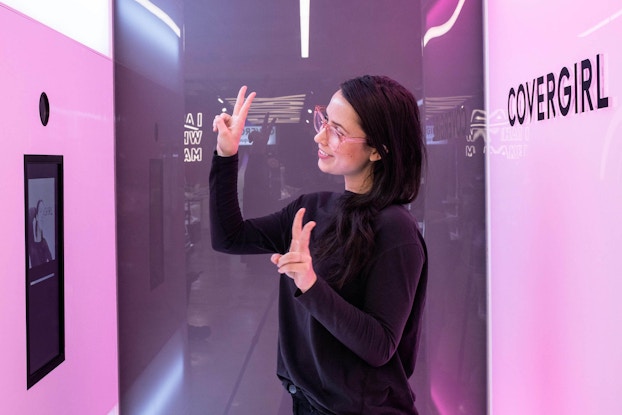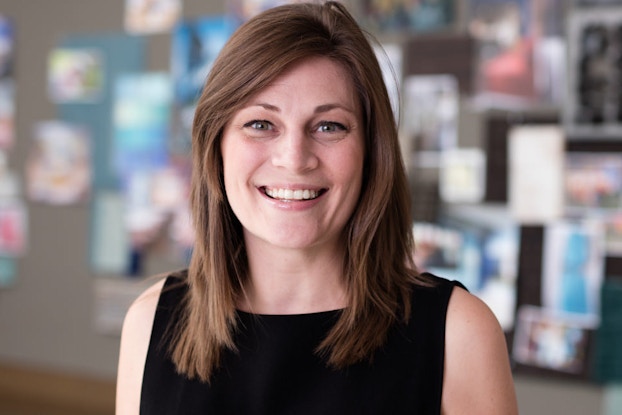
Retailers that want to create experiences that draw shoppers into their stores are thinking beyond their massive flagship stores with experiences that can be scaled small enough to work in multiple locations.
Micro-experiences — targeted in-store experiences like the cold room at Canada Goose, where shoppers try on parkas in sub-zero temperatures, or the custom tailoring and personalization services at Levi’s stores, or L’Occitane’s “Escape to Provence” mini spa treatment, complete with virtual reality headset, lavender perfume mist and hand massage — are ways stores give shoppers something they can’t get online.
These experiences can be small enough to be duplicated in all of a retailer’s stores, and don’t have to be confined to the giant flagships.
“You can create an amazing experience at a flagship, but that’s going to be for a limited clientele in a limited market,” Robyn Novak, vice president and managing creative director of the retail studio of design and brand consulting firm FRCH Nelson, told CO—.
“Retailers need to focus on stores across the country in multiple-tiered markets, and these micro-experiences provide a great opportunity to connect with the consumer,” she said.
Novak, who has been working with retail clients at FRCH Nelson for 20 years, defines micro-experiences using four key criteria.
First, she said, micro-experiences are in-store, physical experiences, not online or digital. Second, they need to be authentic to the brand, something the brand can deliver in a store in a unique way. Third, the micro-experience should augment the core transaction of the store and be a revenue generator; and fourth, it should be something that is scalable to numerous locations.

Expanding beyond flagships
Novak began to notice the effectiveness of micro-experiences while conducting store visits and focus groups for clients.
While flagships get the buzz and media attention, Novak said, what resonates with shoppers are the micro-experiences within the stores, such as the Nike store fitting room lockers that can be pre-loaded with merchandise the customer selects with an app, or the augmented reality glam mirrors at the CoverGirl flagship, where customers can virtually try on makeup.
Those experiences can be duplicated in smaller stores and smaller settings, Novak said.
“Some of these micro-experiences, if a brand does it, and does it right, they can expand it into everyday retail, not just flagships,” she said.
Customers want unique experiences
In-store experiences are increasingly seen as a crucial ingredient to drive brick-and-mortar sales.
Close to one quarter of consumers, 22.8%, say they would shop more if stores provided unique experiences, and more than two-thirds, 68.9%, said a good in-store experience is important or very important to them, according to the State of Consumer Behavior 2020 report by digital signage and store solutions company Raydiant.
We’ve progressed from a very transaction-based, product-based economy to more of an experience-based way of looking at thingsRobyn Novak, vice president and managing creative director of the retail studio, FRCH Nelson
Experience
The customer experience is one of the top trends that aid in business success today. Read on for more consumer trends.

Retail brands, Novak said, are now asking for designs that allow for micro-experiences when they open new stores or remodel existing ones.
“We’ve progressed from a very transaction-based, product-based economy to more of an experience-based way of looking at things. For the retail brands that are coming to us, the ability to sell the product is almost an underlying given. Now it’s, ‘How do you create experiences to make people connect with the brand, to engage on a higher level?’” she said.
CO— interviewed Novak after she shared her research about micro-experiences at a workshop at the annual National Retail Federation showthis year.
She cited doll and toy brand American Girl and hair-styling chain Drybar as good examples of brands with micro-experiences, and executives from those chains participated in her presentation.
An experience inspired by an egg chair
American Girl, which is a subsidiary of Mattel, added new experiences to its New York City and Chicago flagship stores this fall.
At the New York City store, it created an immersive environment for its 1970s-themed doll, Julie, with a full-size vintage Volkswagen Beetle, beaded curtains, rotary phone and a classic egg chair, a 1970s design icon that looks like a hollow egg lined with cushions, perched on a pedestal.
The size of the experience originally “was literally the footprint of the egg chair,” Barbara Carlson, senior director, global creative services for American Girl, said during Novak’s NRF panel.
“That experience was something that girls were engaging with and connecting with before we decided to blow it up in scale,” she said. The Julie’s Groovy World installation was designed, she said, so that parts of it can be used to create smaller experiences in other locations.
In creating experiences, Carlson said, American Girl “needs to make sure that we are being relevant and engaging to the girl, and authentic to our core narrative and storytelling.” That means emphasizing physical, analog experiences in its stores, such as styling salons for dolls, or doll hospitals where girls can give their dolls a pretend checkup, rather than digital screens.

Taking the Drybar experience on the road
Drybar has used micro-experiences to spread awareness of its brand beyond its salons. Because the Drybar salons already are entirely experiential, Drybar has been creating micro-Drybar experiences outside of its salons, through partnerships with events and other brands, such as Drybar pop-ups at Paramount’s “Like a Boss” movie premiere, or in the American Express lounge at the U.S. Open tennis tournament. It has also partnered with retailers such as Sephora and H&M.
Those partnerships increase the exposure for the brand and “enable us to reach people that we don’t normally touch,” Sarah Hoffman, chief marketing officer at Drybar told the retail audience.
“Micro-experiences,” Hoffman said, “really are going to become table stakes for retailers, particularly when today’s consumers have so many choices.”
CO— aims to bring you inspiration from leading respected experts. However, before making any business decision, you should consult a professional who can advise you based on your individual situation.
Want to read more? Be sure to follow us on LinkedIn!
CO—is committed to helping you start, run and grow your small business. Learn more about the benefits of small business membership in the U.S. Chamber of Commerce, here.







